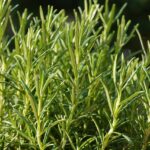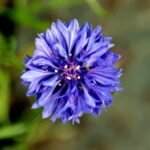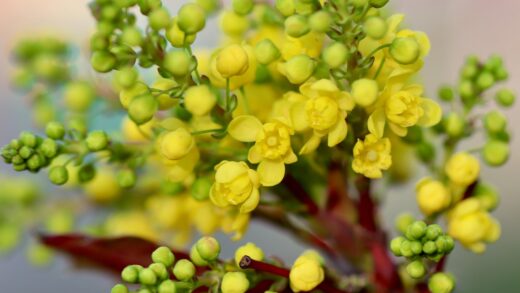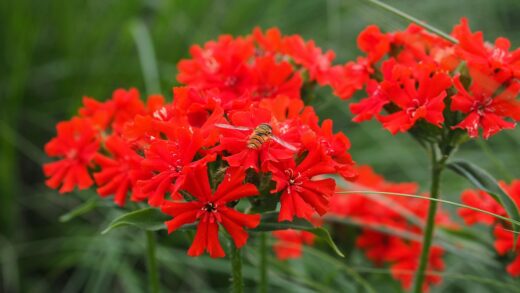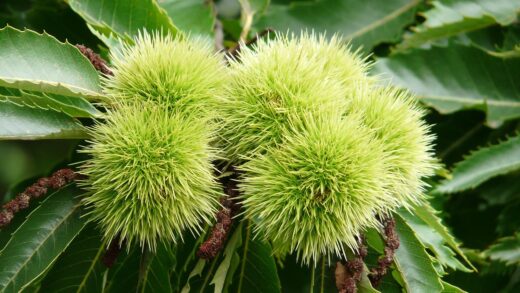The watering and fertilizing of the dahlia
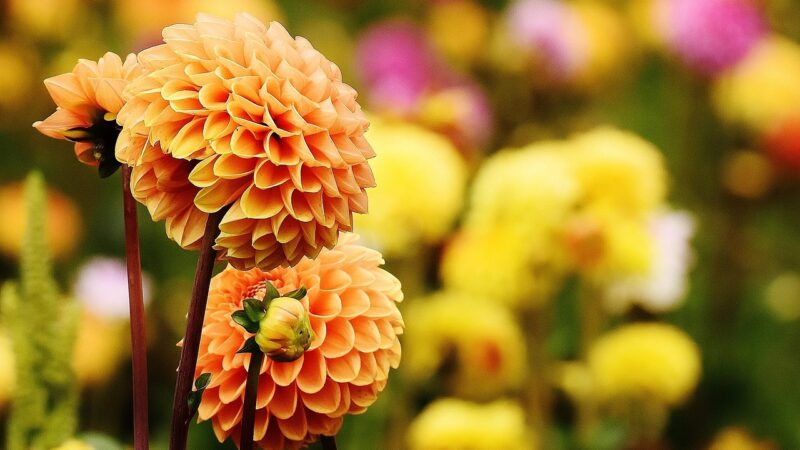
Providing the right balance of water and nutrients is fundamental to cultivating dahlias that are not just healthy, but truly spectacular. These vibrant flowers are vigorous growers and heavy feeders, requiring consistent moisture and a steady supply of the correct nutrients to support their lush foliage and prolific blooming. However, their needs are not static; they change throughout the growth cycle, from the initial sprouting of the tuber to the peak of the flowering season. Mastering the art of watering and fertilizing involves understanding these changing requirements and responding with timely and appropriate care. An effective regimen will prevent issues like tuber rot and weak growth while maximizing the size, quantity, and quality of the blooms.
Understanding the dahlia’s water requirements
Water is the lifeblood of a dahlia plant, essential for photosynthesis, nutrient transport, and maintaining turgor in its stems and leaves. However, the plant’s water needs fluctuate significantly throughout its life cycle, and understanding these changes is key to providing optimal care. In the very beginning, after a tuber is planted, it requires no supplemental watering. The tuber itself contains enough moisture and nutrients to initiate sprouting, and adding water to the cold spring soil at this stage is the most common cause of tuber rot. Watering should only commence once the first green shoots have broken through the soil surface and begin to actively grow.
Once the dahlia is established and has developed a healthy amount of foliage, its demand for water increases dramatically. During the peak growing and blooming season in mid to late summer, a large dahlia plant can transpire a significant amount of water on a hot day. The goal is to maintain consistent soil moisture without creating waterlogged conditions. The best approach is to practice deep, infrequent watering rather than light, daily sprinkling. Deep watering encourages the plant to develop a strong, extensive root system that can better withstand periods of heat and drought, whereas shallow watering promotes a weak, surface-level root system.
The amount and frequency of watering will depend on several factors, including your soil type, climate, and recent weather conditions. Sandy soils drain quickly and will require more frequent watering than heavy clay soils, which retain moisture for longer. A simple and effective way to determine if your dahlias need water is to check the soil with your finger. If the top one to two inches of soil feel dry to the touch, it is time to water. On hot, windy days, plants will lose more moisture and may need watering more often than during cool, overcast periods.
It is also important to consider the method of water application. Whenever possible, water dahlias at the base of the plant using a soaker hose, drip irrigation, or a watering wand. This directs the water straight to the root zone where it is needed and keeps the foliage dry. Wetting the leaves, especially in the evening, can create a humid environment that is conducive to the development of fungal diseases like powdery mildew. Watering in the morning is generally considered the best practice, as it ensures the plant is well-hydrated before the heat of the day and allows any moisture on the leaves to evaporate quickly.
More articles on this topic
The principles of effective fertilization
Dahlias are known as heavy feeders, meaning they require a substantial amount of nutrients to fuel their rapid growth and extravagant flower production. A well-planned fertilization strategy is therefore essential for achieving the best possible results. The key is to provide the right balance of nutrients, particularly the three macronutrients: nitrogen (N), phosphorus (P), and potassium (K). Nitrogen is crucial for leafy green growth, phosphorus supports strong root development and flower production, and potassium contributes to overall plant health and vigor. Understanding the role of each element is the first step in choosing an appropriate fertilizer.
A common mistake in dahlia cultivation is providing too much nitrogen, especially after the plant has become established. While a small amount of nitrogen is needed early on to build the ‘factory’ of leaves, excessive nitrogen later in the season will result in a large, lush, green plant with very few flowers. For this reason, it is recommended to use a balanced fertilizer or, ideally, one that is lower in nitrogen and higher in phosphorus and potassium. Fertilizers labeled as ‘bloom boosters’ or those formulated for tomatoes and vegetables often have an appropriate N-P-K ratio for dahlias.
The timing of fertilizer application is just as important as the type of fertilizer used. The first application can be made at planting time, by incorporating a low-nitrogen, high-phosphorus granular fertilizer into the bottom of the planting hole. Subsequent feedings should begin once the plant is actively growing and about a foot tall. From this point on, a regular feeding schedule should be maintained throughout the blooming season, typically every three to four weeks for granular fertilizers or every two weeks for liquid fertilizers. This consistent supply of nutrients ensures the plant has the energy it needs for continuous flower production.
It is crucial to cease all fertilization towards the end of the growing season, usually around the end of August or early September in most climates. Continuing to feed the plants, especially with nitrogen, encourages the growth of soft, new foliage that will be easily damaged by the first frost. More importantly, it signals the plant to keep growing rather than preparing its tuber for dormancy. Allowing the plant to naturally slow down and harden off ensures that the tuber will be mature and well-prepared for winter storage, containing all the energy reserves it needs for the following year.
More articles on this topic
Choosing the right type of fertilizer
When selecting a fertilizer for your dahlias, you will be faced with a choice between several different types, including granular, liquid, and organic options. Granular fertilizers are a popular and convenient choice for many gardeners. These are dry pellets that are typically sprinkled on the soil surface around the plant and then watered in. They are considered ‘slow-release’ because they break down gradually over time, providing a steady supply of nutrients to the plant over several weeks. This makes them a good option for the initial feeding at planting time and for subsequent applications throughout the season, as they reduce the risk of over-fertilizing.
Liquid fertilizers, on the other hand, are water-soluble and are applied to the plant during regular watering. They are absorbed much more quickly by the plant’s roots, providing an immediate nutrient boost. This makes them an excellent choice for giving a quick feed to plants that may be showing signs of a nutrient deficiency or for providing a supplemental boost during the peak flowering period. Because they are fast-acting, they also need to be applied more frequently, often every one to two weeks. It is very important to dilute liquid fertilizers according to the manufacturer’s instructions to avoid burning the plant’s roots.
Organic fertilizers, such as bone meal, fish emulsion, and compost tea, are another excellent option for feeding dahlias. These fertilizers are derived from natural materials and work by enriching the soil and feeding the beneficial microorganisms within it. These microorganisms then break down the organic matter into a form that the plants can absorb. While they may be slower to act than synthetic fertilizers, they have the significant advantage of improving long-term soil health and structure. Many gardeners prefer a hybrid approach, using organic amendments to build healthy soil and supplementing with targeted applications of granular or liquid fertilizers as needed.
Ultimately, the best fertilizer for your dahlias is one that is low in nitrogen and high in phosphorus and potassium. Look for products with an N-P-K ratio such as 5-10-10, 10-20-20, or a similar formulation. Bone meal is an excellent organic source of phosphorus and can be incorporated into the planting hole to promote strong root development. Regardless of the type you choose, always follow the application rates and instructions on the product label. Over-fertilizing can be just as harmful as under-fertilizing, potentially leading to root burn, weak growth, and a buildup of salts in the soil.
A seasonal feeding schedule
To simplify the process of fertilizing dahlias, it is helpful to follow a structured seasonal schedule. This ensures the plants receive the right nutrients at the right time to support their changing needs throughout the growth cycle. The schedule can be broken down into three main phases: planting time, the active growth period, and the late season. Adhering to a schedule like this takes the guesswork out of fertilization and promotes consistently healthy and productive plants. It provides a reliable framework for supporting your dahlias from tuber to final bloom.
The first phase is at planting time. After digging the planting hole, this is the ideal moment to provide the initial nutrients that will support early root development. Mix a small handful of a granular fertilizer that is low in nitrogen and high in phosphorus and potassium directly into the soil at the bottom of thehole. Good examples include a 5-10-10 formula or a simple amendment of bone meal. After adding the fertilizer, cover it with a thin layer of soil before placing the tuber in the hole. This initial application provides a slow-release source of food that the plant can access as soon as its new roots begin to grow.
The second phase of the feeding schedule begins once the dahlia plant is established and is showing vigorous growth, typically when it reaches about 12 inches in height. From this point until late summer, the plant is in its most active period of growth and flower production and requires a consistent supply of nutrients. You should begin a regular feeding program using either a liquid or granular bloom-boosting fertilizer. Apply the fertilizer according to the package directions, which is generally every 2-4 weeks. This regular feeding will fuel the continuous production of stems, leaves, and, most importantly, an abundance of high-quality flowers.
The final phase involves tapering off and eventually stopping all fertilizer applications as the season winds down. By late August or the beginning of September, you should administer the last feeding of the season. Continuing to fertilize beyond this point is detrimental to the plant’s preparation for dormancy. The plant needs to slow its growth and focus on maturing the tuber for winter storage. Ceasing fertilization is a crucial signal to the plant to begin this hardening-off process, ensuring the tuber is robust and viable for the following year’s garden.
Water and nutrient-related problems
Improper watering and fertilization practices can lead to a host of problems for dahlia plants, ranging from poor growth and reduced flowering to serious diseases. One of the most severe issues is tuber rot, which is almost always caused by overwatering, particularly early in the season before the plant has sprouted. When a tuber sits in cold, saturated soil, it is highly susceptible to fungal and bacterial decay. Symptoms of a problem may not be visible until the plant fails to emerge or the young shoots suddenly wilt and die. To avoid this, always wait for the shoots to appear before you begin watering.
Yellowing leaves can be a symptom of several different issues related to water and nutrients. If the lower, older leaves are turning yellow while the rest of the plant appears healthy, it could be a sign of a nitrogen deficiency, as the plant is moving this mobile nutrient to its new growth. Conversely, yellowing leaves can also be a symptom of overwatering, which leads to root rot and prevents the plant from absorbing nutrients effectively. To diagnose the problem, check the soil moisture levels. If the soil is constantly soggy, reduce watering; if it is consistently dry and the plant is actively growing, a balanced fertilizer application may be needed.
Stunted growth and a lack of flowers are often directly related to inadequate nutrition. Dahlias are heavy feeders, and if the soil is poor or they are not fertilized regularly, they will not have the energy to reach their full potential. The plant may appear weak, with pale foliage and few, if any, flower buds. This is particularly common in container-grown dahlias, as the limited amount of soil is quickly depleted of nutrients. A regular feeding schedule with a bloom-boosting fertilizer is the best remedy for this issue.
Conversely, a dahlia plant that is excessively lush and green but produces very few blooms is a classic sign of nitrogen over-fertilization. The high levels of nitrogen encourage the plant to put all its energy into producing foliage at the expense of flowers. This can be frustrating for the gardener who is met with a giant green bush instead of a vibrant floral display. To correct this, cease using any high-nitrogen fertilizers and switch to one with a high phosphorus and potassium content. It may take several weeks, but this will help to shift the plant’s focus from vegetative growth to flower production.










